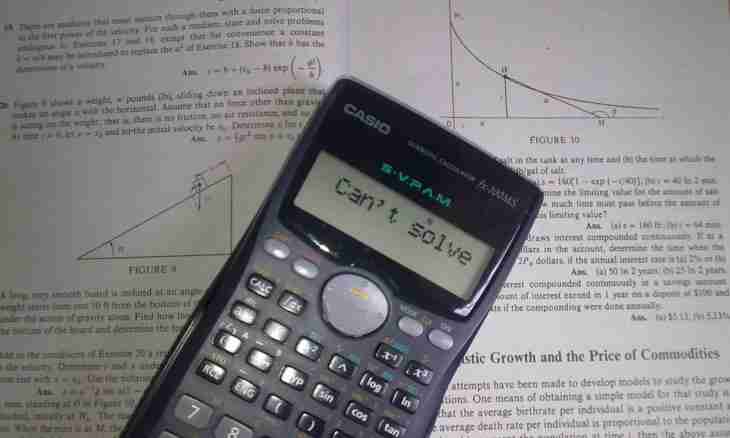Complex numbers — further expansion of a concept of number in comparison with real numbers. Introduction to mathematics of complex numbers allowed to give the finished look to many regularities and formulas and also revealed deep communications between the different fields of mathematical science.
Instruction
1. It is known that no real number can be a square root from a negative number, that is if b <0, then it is impossible to find such a that a^2 = b. In this regard it was decided to enter new unit by means of which it would be possible to express such a. It received the name of imaginary unit and designation i. Imaginary unit is equal to a square root from-1.
2. As i^2 =-1, √ (-b^2) = √ ((-1) * b^2) = √ (-1) * √ (b^2) = ib. The concept of imaginary number is so entered. Any imaginary number can be expressed as ib where b is a real number.
3. Real numbers can be presented in the form of a numerical axis from minus infinity to plus infinity. Imaginary numbers were convenient to be presented in the form of a similar axis perpendicular to an axis of real numbers. Together they make coordinates of the numerical plane. At the same time to each point of the numerical plane with coordinates (a, b) corresponds one and only one complex number of a type of a + to ib where an and b — real numbers. First composed this sum the second is called the valid part of complex number — an imaginary part.
4. If a = 0, then complex number is called purely imaginary. If b = 0, then number is called valid.
5. The sign of addition between the valid and imaginary parts of complex number does not designate their arithmetic sum. Rather complex number can be presented in the form of a vector which beginning coincides with the beginning of coordinates, and the end is in a point (a, b). any vector, at complex number has an absolute value, or the module. If z = x + iy, then |z| = √ (x2 + y^2).
6. Two complex numbers are considered as equal only if the valid part of one is equal to the valid part of another and an imaginary part of one is equal to an imaginary part of another, that is: z1 = z2, if x1 = x2 and y1 = y2. However for complex numbers signs of inequality do not make sense, that is it is impossible to tell that z1 <z2 or z1> z2. It is possible to compare thus only modules of complex numbers.
7. If z1 = x1 + iy1 and z2 = x2 + iy2 are complex numbers, then: z1 + z2 = (x1 + x2) + i (y1 + y2); z1 - z2 = (x1 - x2) + i (y1 - y2); It is easy to notice that addition and subtraction of complex numbers submits to the same rule that addition and subtraction of vectors.
8. The work of two complex numbers is equal: z1*z2 = (x1 + iy1) * (x2 + iy2) = x1*x2 + i*y1*x2 + i*x1*y2 + (i^2) *y1*y2. As i^2 =-1, the end result is equal: (x1*x2 - y1*y2) + i (x1*y2 + x2*y1).
9. Operations of exponentiation and extraction of a root for complex numbers are defined as well as for valid. However in complex area for any number there is exactly n of such numbers b that b^n = a, that is n of roots n-oh degrees. In particular, it means that any algebraic equation n-oh has degrees from one variable exactly n of complex roots some of which can be and valid.

